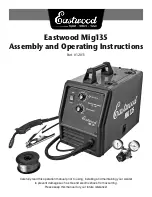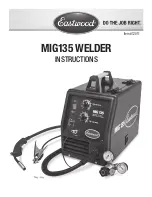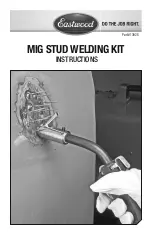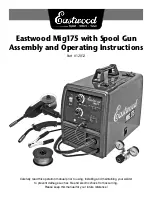
ELECTRO-VOICE
®
Xi-A Rigging Manual
10
III. Associated Rigging Hardware for Flying Xi-A
Loudspeaker Systems
3.1 Grids and Associated Rigging Hardware
The GS-1B, LS-1B, LS-2B, LS-3B, RS-1B and RS-2B rigging accessories described throughout
this manual for use with the flying Xi-A loudspeaker systems are available from Sound
Manufacturing, Inc. (See Appendix A for details.) Electro-Voice does not manufacture grids or any
of the other associated hardware required for suspending Xi-A loudspeaker arrays overhead. In
the case of both permanent-installation and touring sound applications, it is generally most
efficient and cost effective to design a support system specific to the application, taking into
account the loudspeaker array requirements. In some permanent installations, it may even be
possible in some circumstances to eliminate the grid and secure the loudspeakers directly to the
building structural supports. The sound-system designer is instructed to evaluate each individual
circumstance and design a support system tailored to the specific application. To aid rigging
designers, the user is directed to two companies that manufacture and sell generalized and semi-
custom rigging hardware and accessories for flying loudspeaker systems - ATM Fly-Ware™ and
Sound Manufacturing, Inc. (See Appendix A for details on how to contact these companies.)
Attention: All associated non-Electro-Voice rigging hardware used for suspending
any X-Array Install™ (Xi-A) loudspeaker systems overhead is expressly the
responsibility of others.
IV. Strength Ratings, Safety Factors and Special Safety
Considerations
4.1 Strength Ratings and Safety Factors
Electro-Voice provides strength ratings for the Xi-A loudspeaker systems in terms of the working-
load limit rating based on an 8:1 minimum safety factor. The working-load-limit rating is defined as
the maximum allowable force that may be applied to the mechanical component. The rated safety
factor is defined as the ratio of the ultimate-break-strength rating to the working-load-limit rating.
The ultimate break-strength rating represents the force applied to a mechanical component at
which the component will structurally fail. As such, the force that would result in a structural failure
in the Xi-A loudspeaker system will be at least eight times greater than the specified working-load-
limit ratings. The safety factor provides a margin of error to accommodate normal dynamic shock
loading, wear and tear on the hardware components, etc.
THE USER MUST NEVER APPLY A LOAD TO AN Xi-A LOUDSPEAKER SYSTEM THAT
EXCEEDS THE WORKING-LOAD LlMIT RATINGS.
There are two independent strength ratings that, together, give a complete description of the
overall structural performance capabilities of any Xi-A loudspeaker system:
1. The working-load-limit rating for each individual rigging point; which is a function of the
rigging track mounted on the enclosure combined with the specified quick-release rigging
hardware. This rating varies as a function of the angle of pull.
2. The working-load-limit rating for the overall enclosure; which is a function of the combined
forces from multiple rigging points simultaneously acting on the enclosure as a whole. This rating
is independent of the rigging pull angles.






































